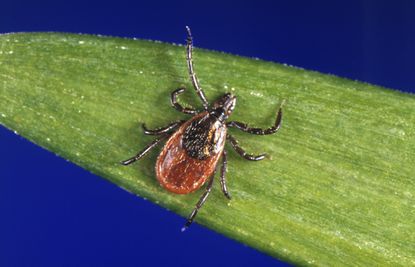03 Feb Lyme Disease in CT & How to Protect Your Family
If you live in Connecticut, you probably have a healthy concern about Lyme disease. The tick-born illness can disrupt a person’s entire life and severely impact their health. Thankfully, it is possible to protect yourself and your family through a variety of Lyme disease prevention tactics. Keep reading for more information on Lyme disease in Connecticut and how you can prevent the disease from spreading to your family.
What is Lyme Disease?
Lyme disease is an infectious disease transmitted by Borrelia burgdorferi, or bacterium. Humans contract Lyme disease through tick bites of infected ticks. Once infected, Lyme disease can cause a wide range of undesired symptoms, such as:
- Fever
- Headache
- Fatigue
- Skin rash
When Lyme disease goes untreated for too long, the infection can spread to other parts of the body. The heart, joints, and nervous system are all at risk for serious cases of Lyme disease. Diagnosis is based on physical symptoms as well as an exposure to ticks.
Lyme Disease in Connecticut
Not many people realize that Connecticut was home to the first known cases of Lyme disease in 1975. In fact, the disease is named after the Connecticut town where several adults and children began showing symptoms of Lyme disease and Lyme arthritis. For more than 40 years, there have been considerable studies and tests conducted to find treatments and vaccines for Lyme disease.
Connecticut is still a hotspot for Lyme disease today. Only 14 states in the US make up 95% of all Lyme disease cases, and Connecticut is among them. The disease is still common in Connecticut, and there has not been any significant decrease in the number of reported cases each year. The Connecticut environment and climate seems to be a great habitat for rodents and ticks, so the chances of getting bit are much higher.
How to Protect Your Family from Lyme Disease
Lyme disease is spread through the bite of an infected blacklegged tick. There are several ways you can avoid coming into contact with these ticks and decrease the risk of contracting Lyme disease.
- Avoid areas that are infested with ticks. Between 1% and 5% of all deer ticks have Lyme disease, but even more can harbor the germs for the disease. They can often be found in wooded areas with tall grass. Shady grassland, leaf litter, and busy areas are also common for deer ticks. In some cases, they can live in lawns or gardens.
- Always be vigilant. The majority of Lyme disease cases occur between May and July, however ticks can still bite in the winter months.
- Wear the right clothing. If you are concerned about tick bites, you should dress appropriately to protect your skin. Long pants and long sleeves will keep ticks at bay. Light-colored clothing makes it easier to spot a tick, and closed-toe shows protect your feet. You can even tape the spot where your pants meet your socks to keep ticks from crawling up your clothing.
- Protect your yard. Ticks can live in your yard, especially near old stone walls. Mow your lawn on a regular basis, keep stacks of wood in dry and sunny areas, use pesticides that kill ticks, and clear any brush or leaves.
- Spray insect repellent. Insect repellent can be used on your skin whenever you are leaving the house. Just follow the instructions to ensure you are safely using the repellent for you and your family.
Trust the Experts to Protect Your Lawn from Ticks
For Connecticut residents, lawn care is a necessity for preventing ticks and reducing your risk of Lyme disease. The qualified lawn care and tick control experts at Neverdousky Brothers have protected local lawns for more than 25 years. They can help you keep your yard looking great while preventing ticks and protecting your family from Lyme disease.




